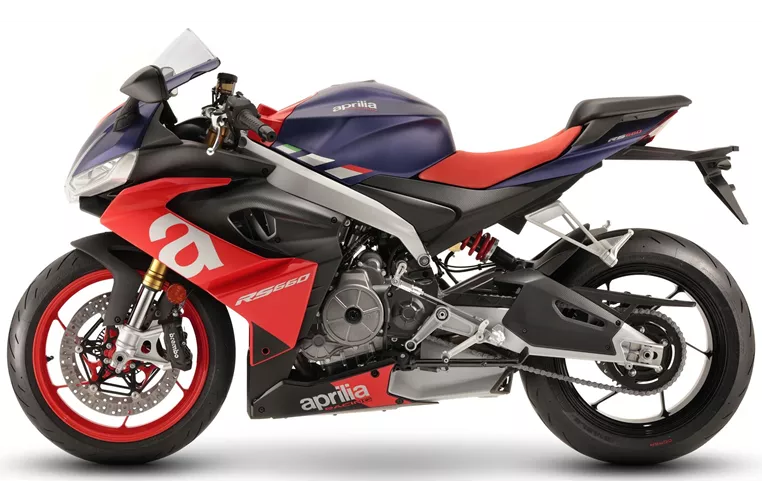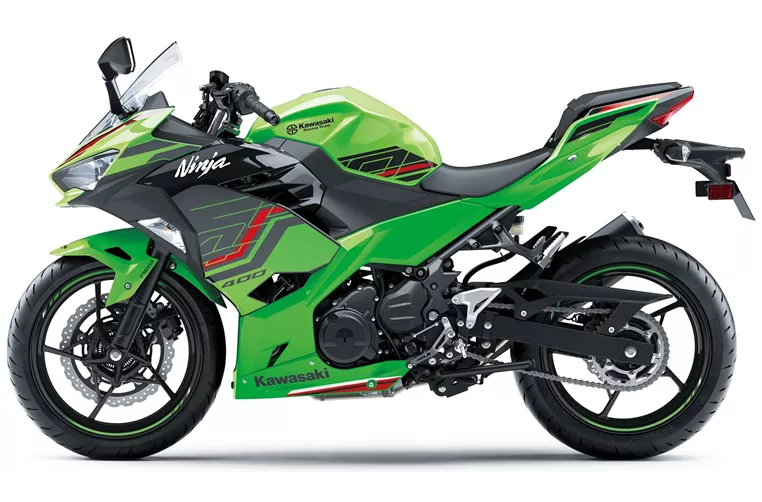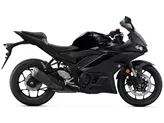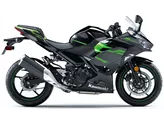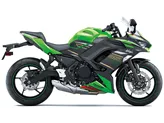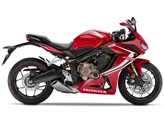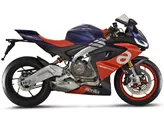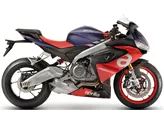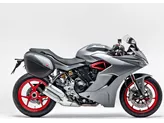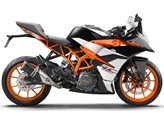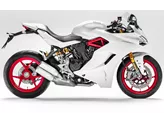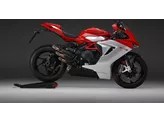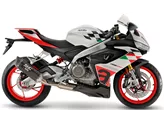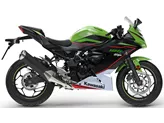Aprilia RS 660 2021 vs. Kawasaki Ninja 400 2023
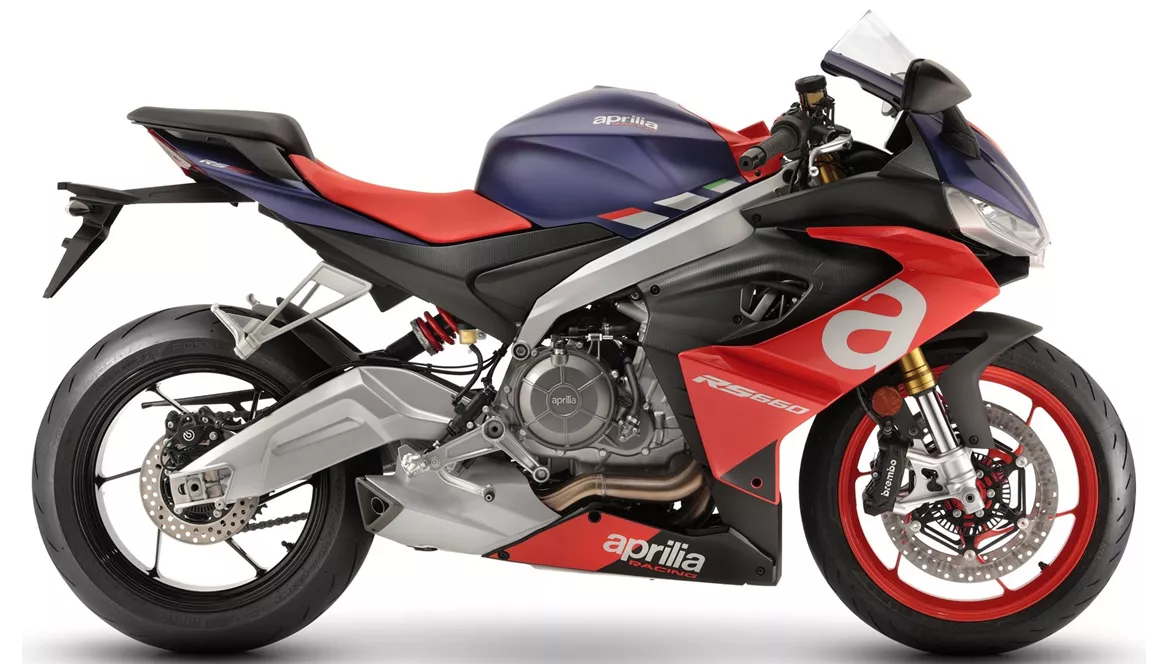
Aprilia RS 660 2021
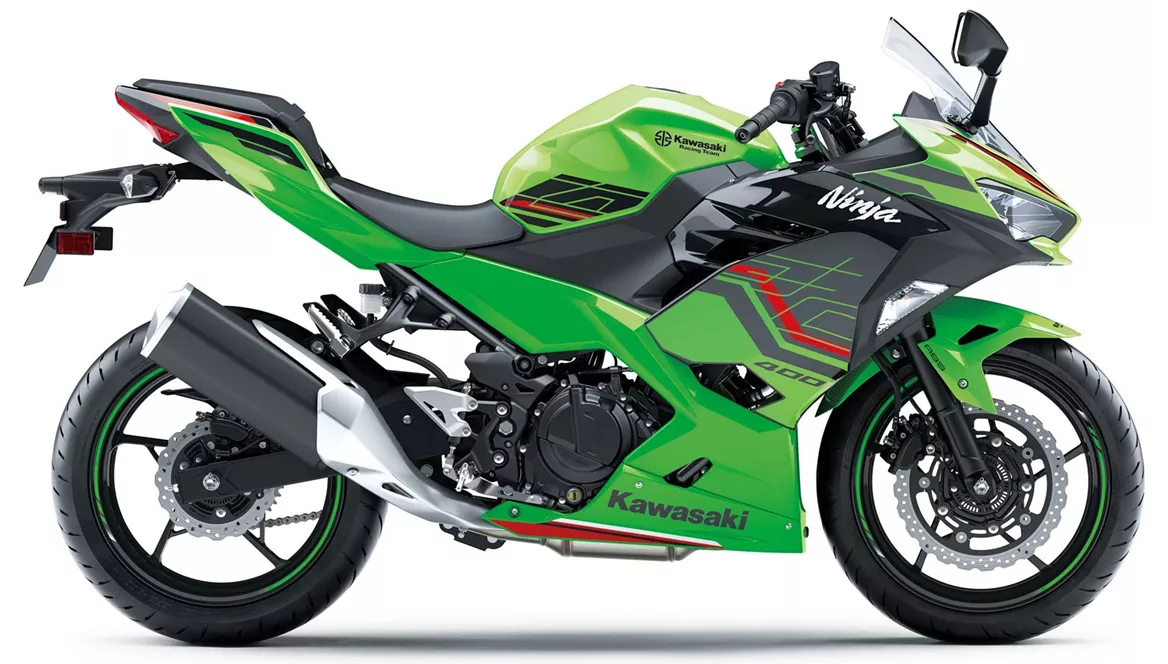
Kawasaki Ninja 400 2023
Overview - Aprilia RS 660 2021 vs Kawasaki Ninja 400 2023
The Aprilia RS 660 2021 and the Kawasaki Ninja 400 2023 are both supersport motorcycles, but they have distinct differences in terms of their technical specifications and strengths.
Starting with the engine and drive train, the Aprilia RS 660 2021 is equipped with an in-line crankpin offset engine with a bore of 81 mm and a stroke of 63.93 mm. It delivers a powerful engine power of 100 HP and a torque of 67 Nm. The compression ratio is 13.5, and it has 2 cylinders with 4 valves per cylinder. On the other hand, the Kawasaki Ninja 400 2023 features an in-line engine with a bore of 70 mm and a stroke of 51.8 mm. It has a lower engine power of 45 HP and a torque of 37 Nm. The compression ratio is 11.5, and it also has 2 cylinders with 4 valves per cylinder. In terms of displacement, the Aprilia RS 660 has a larger capacity of 659 cc compared to the Kawasaki Ninja 400's 399 cc.
Moving on to the suspension, both motorcycles have a swing arm rear suspension with a monoshock absorber. However, the Aprilia RS 660 2021 is equipped with an upside-down telescopic fork front suspension with a diameter of 41 mm, while the Kawasaki Ninja 400 2023 has a telescopic fork front suspension with the same diameter. This difference in front suspension may contribute to the Aprilia's sportier handling and performance.
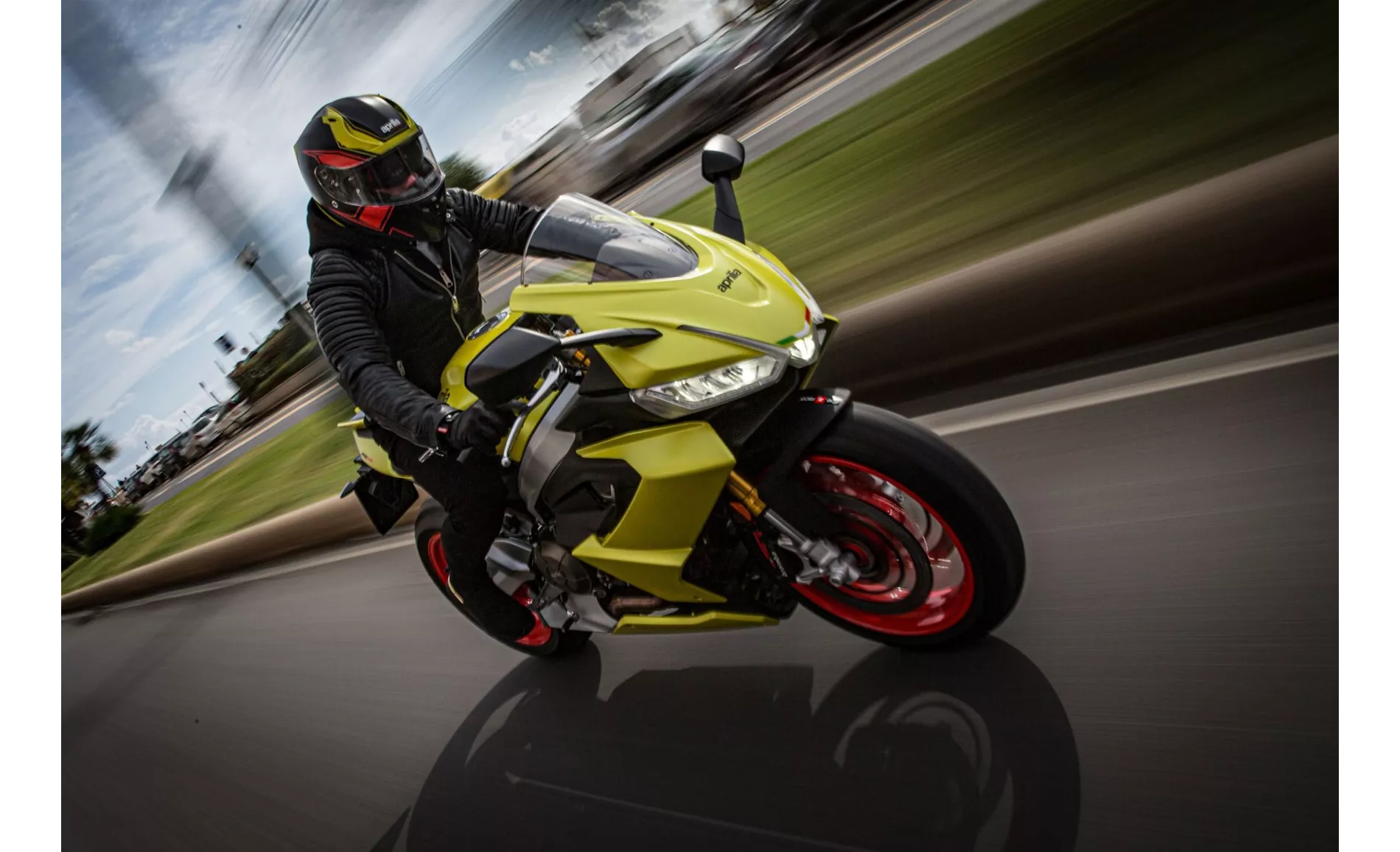
Aprilia RS 660 2021
In terms of chassis, the Aprilia RS 660 2021 features an aluminum frame with a load-bearing engine design. It has a rake of 65.9 degrees and a trail of 104.6 mm. On the other hand, the Kawasaki Ninja 400 2023 has a steel frame with a tubular design. It has a slightly smaller rake of 63 degrees and a trail of 92 mm. The Aprilia's aluminum frame may contribute to its lower weight and more agile handling.
When it comes to brakes, the Aprilia RS 660 2021 is equipped with double disk front brakes with a diameter of 320 mm and radial technology. The Kawasaki Ninja 400 2023, on the other hand, has a single disk front brake with a slightly smaller diameter of 310 mm and petal technology. The Aprilia's larger and dual front brakes may provide better stopping power and control.
In terms of advanced rider assistance systems, the Aprilia RS 660 2021 offers a comprehensive package including ABS, riding modes, launch control, ride by wire, quickshifter, traction control, and anti-wheelie. The Kawasaki Ninja 400 2023, on the other hand, only offers ABS. The Aprilia's advanced rider assistance systems provide more options for customization and enhanced safety.
Moving on to dimensions and weights, both motorcycles have a 17-inch front and rear tire diameter. However, the Aprilia RS 660 2021 has wider tires with a front width of 120 mm and a rear width of 180 mm, while the Kawasaki Ninja 400 2023 has a front width of 110 mm and a rear width of 150 mm. Both motorcycles have the same wheelbase of 1370 mm, but the Aprilia has a higher seat height of 820 mm compared to the Kawasaki's 785 mm. In terms of weight, the Aprilia RS 660 2021 has a slightly higher kerb weight of 183 kg compared to the Kawasaki Ninja 400 2023's 168 kg. Both motorcycles have a fuel tank capacity of 15 liters and 14 liters, respectively.
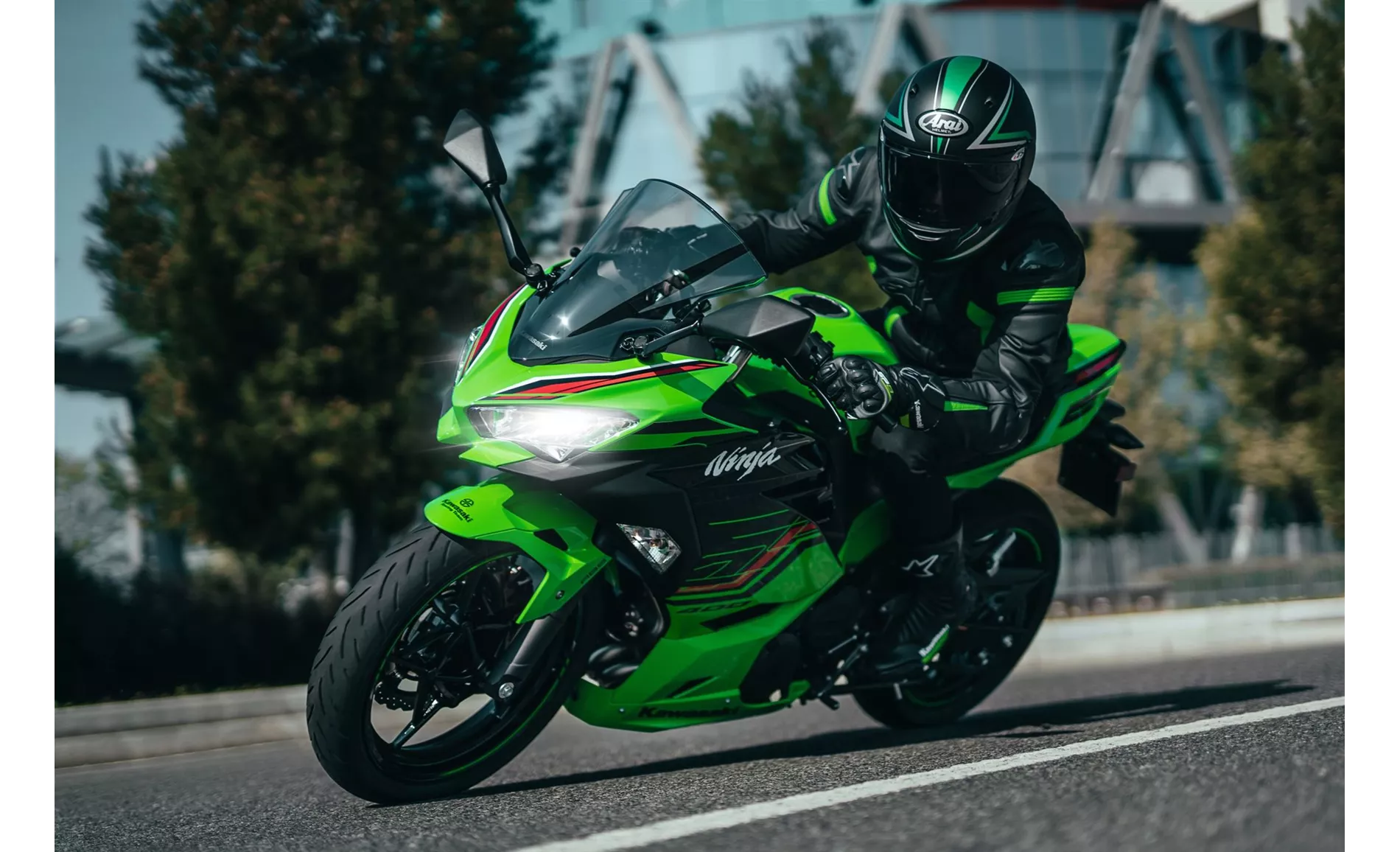
Kawasaki Ninja 400 2023
In terms of strengths, the Aprilia RS 660 2021 stands out with its powerful engine, extensive electronics package, sporty chassis, nice sound, low weight, and sporty look. On the other hand, the Kawasaki Ninja 400 2023 excels in its good combination of stability and playful handling, robust and reliable appearance, well-controllable engine, wide usable rev range, and pleasant seating position.
However, the Aprilia RS 660 2021 does have a weakness in terms of a poorly readable rev counter, while the Kawasaki Ninja 400 2023 has a limitation in space for larger riders.
In conclusion, the Aprilia RS 660 2021 and the Kawasaki Ninja 400 2023 are both impressive supersport motorcycles with their own unique features and strengths. The Aprilia offers a more powerful and advanced package with its higher engine power, extensive electronics, and sporty design. On the other hand, the Kawasaki provides a reliable and enjoyable riding experience with its stable handling, controllable engine, and comfortable seating position. Ultimately, the choice between the two would depend on the rider's preferences and priorities.
Technical Specifications Aprilia RS 660 2021 compared to Kawasaki Ninja 400 2023
Pros and Cons in comparison
Pros and Cons in comparison
Aprilia RS 660 2021
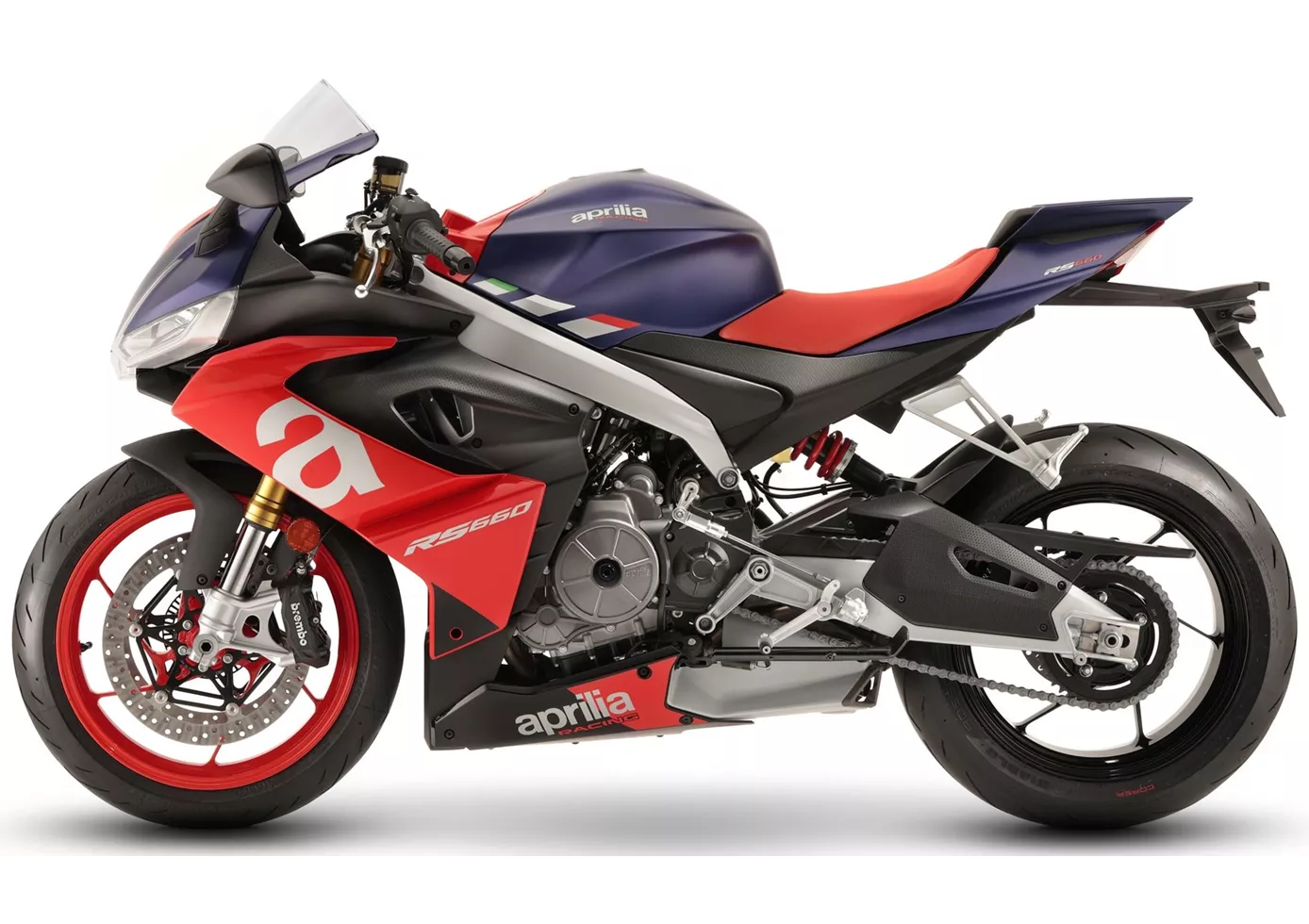
In 2021, the Aprilia RS 660 can be seen as the last true 600cc supersport, because with its sporty seating position and high-quality chassis components, it hits the sweet spot between suitability for everyday use and trackday potential. Thanks to the comprehensive electronics package, nothing is left to be desired on the road or on the track - and you can't complain about the powerful two-cylinder anyway. A great package for all those for whom 200+ hp superbikes are too much for everyday use.
Kawasaki Ninja 400 2023
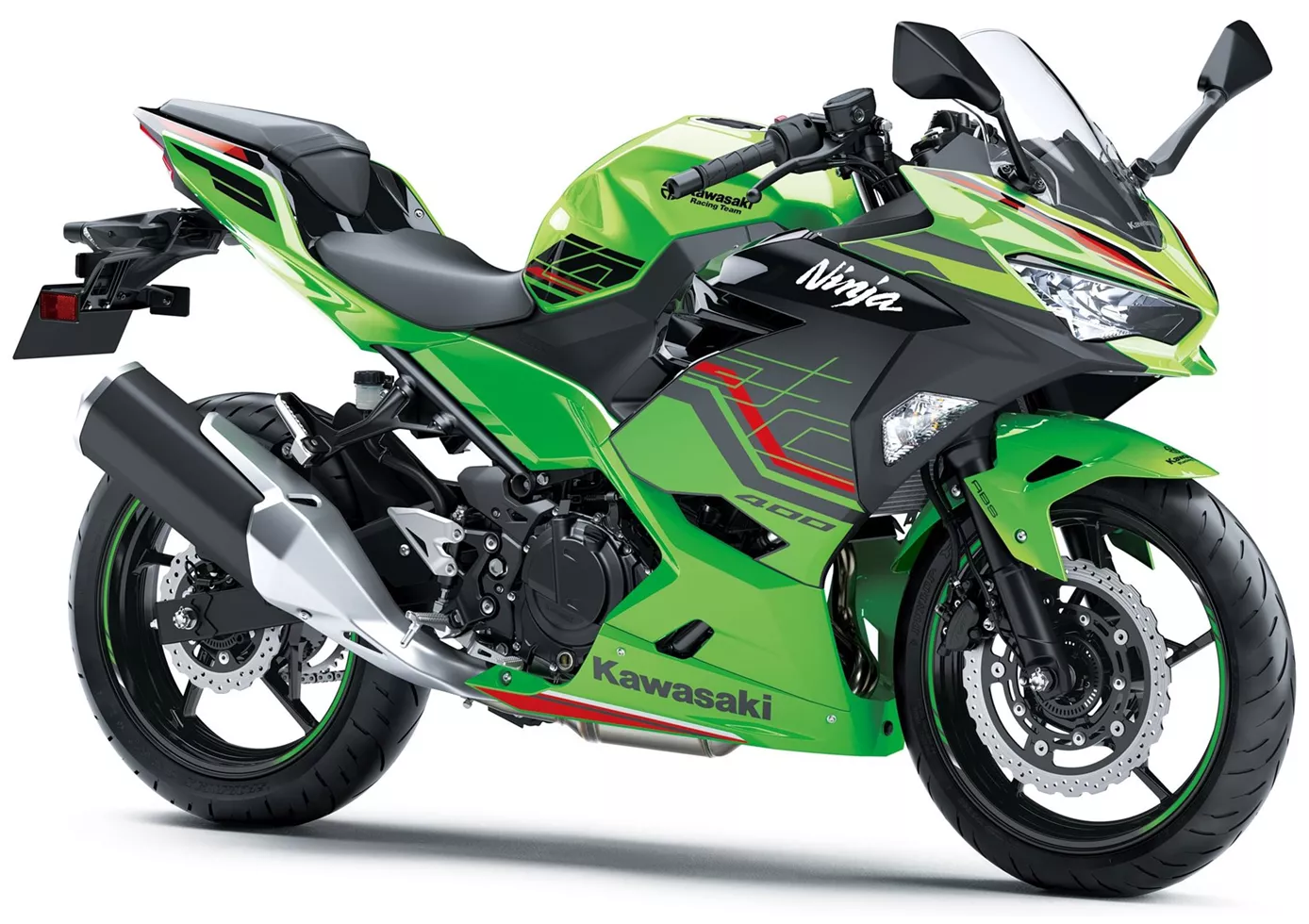
The Ninja 400 offers a lot of riding fun at a manageable price. It offers playful handling without being nervous. The name "Ninja" is a bit of a mouthful, but the range of use is wider than you might think. It rides sportily, but also offers a good riding position for everyday use and touring.
Price Comparison Avarage Market Price Aprilia RS 660 vs Kawasaki Ninja 400
There are a few key differences between a Aprilia RS 660 2021 and a Kawasaki Ninja 400 2023. In terms of price, the actual average price of a Aprilia RS 660 2021 is about 57% higher. Compared to Kawasaki Ninja 400 2023 there are less Aprilia RS 660 2021 bikes available on the 1000PS.de Marketplace, specifically 16 compared to 73. It takes less time to sell a Aprilia RS 660 with 101 days compared to 165 days for a Kawasaki Ninja 400. Since model year 2020 1000PS.de editors have written 14 reviews for the Aprilia RS 660 and 9 reviews for the Kawasaki Ninja 400 since model year 2018. The first review for the Aprilia RS 660 was published on 05/11/2019 and now has more than 52,500 views. This compares to more than 44,300 views for the first review on Kawasaki Ninja 400 published on 22/11/2017.
